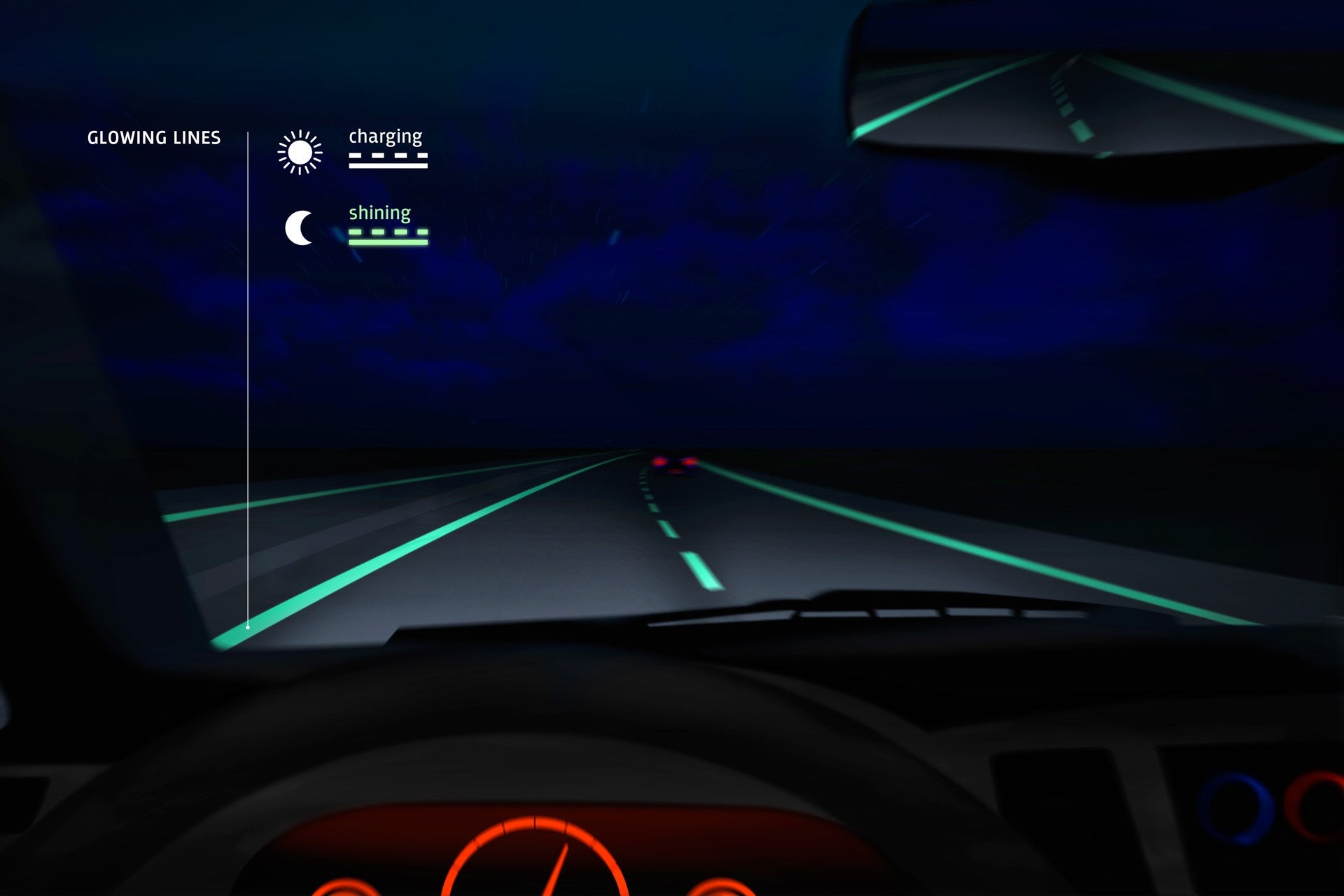Glow-in-the-dark road markings replace street lights for highway in Netherlands
Experimental project could extend visibility and save money on street lighting

A 500-metre stretch of highway in the Netherlands has become the first in the country to replace streetlights with glow-in-the-dark road markings.
The section of road from the N329 near Oss uses a photo-luminescent powder combined with road paint to absorb light during the day and expel it at night.
The concept was first suggested by designer Daan Roosegaarde in October 2012. Roosegaarde promised to introduce the markings in 2013 but has blamed “government bureaucracy” on the delays.
However, despite the amazing vision of Roosegaard’s concept, the glow-in-the-dark paint still needs to address some technical limitations. For example, the triple lines of “radioactive green” only glow for eight hours after a full day's charge. It’s also yet to be seen how the markings will stand up to wear and tear from vehicles and the elements.
Roland de Waal of the construction company Heijmans (who developed the paint) also noted that people were switching off their lights to see how “beautiful” the designs were - an understandable response, but not the best for road safety.
Roosegaard’s original plans not only called for glow-in-the-dark markings but also road surfaces that reacted to weather patterns. This would mean that when temperatures dropped below freezing snowdrop icons would appear on the tarmac.
An alternative to the glow-in-the-dark road paint currently deployed in the UK is the solar-powered cat’s eye. Usually these road studs rely on reflecting the light from the headlights of a car to light up the road, but this new variety (introduced over the last 7 years in Britain) uses integrated solar panels to absorb light during the day and expel it at night.
They may not look as magical as Roosegaard’s designs but they increase visibility on the road from 90 metres to 900m and have been shown to reduce night time accidents by more than 70 per cent.
Subscribe to Independent Premium to bookmark this article
Want to bookmark your favourite articles and stories to read or reference later? Start your Independent Premium subscription today.

Join our commenting forum
Join thought-provoking conversations, follow other Independent readers and see their replies